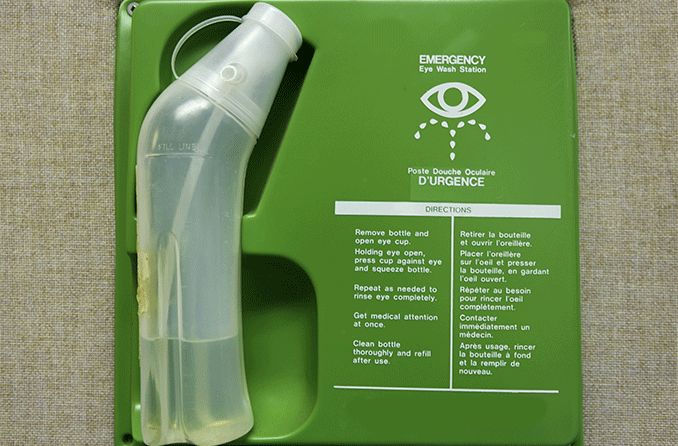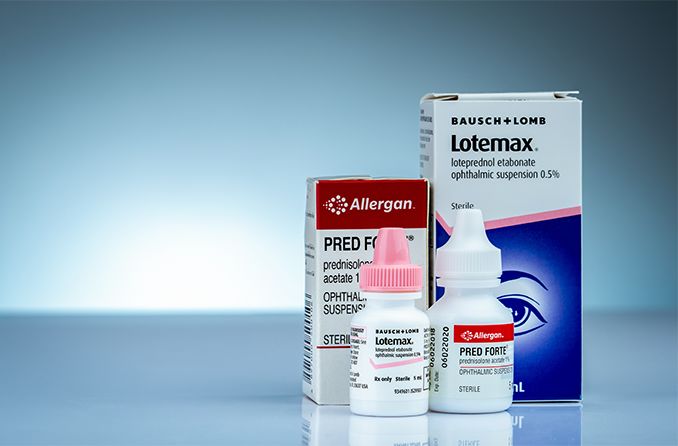What is ophthalmic ointment?
An ophthalmic ointment is a semi-solid, greasy or creamy topical treatment for certain eye conditions, whether mild or severe. Ophthalmic ointments are often recommended for eye infections, dry eyes and blepharitis (eyelid inflammation), among many other issues of the eye.
Some conditions may require a prescription antibiotic ointment to ensure proper healing, while others only require an over-the-counter regimen.
Always talk to your eye doctor before using an ointment or other topical eye remedy, as the care you need may vary depending on the condition, its severity and its underlying cause.
What is ophthalmic ointment used for?
Ophthalmic ointments are recommended to treat conditions such as:
Eye infections, including conjunctivitis (pink eye)
Eyelid conditions such as blepharitis and meibomian gland dysfunction
Dry eyes/dry eye syndrome
Types of ophthalmic ointment
There are various types of ophthalmic ointment. Each contains different ingredients to target what caused an eye condition to emerge.
Categories of ophthalmic ointment include:
Antibiotic ointment – Kills the bacteria that caused an eye or eyelid infection
Lubricating ointment – Aids in keeping the eyes moist when conditions such as dry eye are present
Note: Antibiotic ointment may be recommended for cases of bacterial pink eye, as this type of ointment targets the bacteria causing the infection. But viral pink eye is caused by a virus, which does not respond to antibiotics.
If you have viral pink eye, you may be able to soothe some of your symptoms with a lubricating ointment, but a viral infection usually just needs to clear up on its own.
LEARN MORE about the types of conjunctivitis (pink eye)
Commonly used ophthalmic ointments
Some commonly prescribed and/or recommended ophthalmic ointments include:
Ciprofloxacin ophthalmic – An antibiotic used to treat corneal ulcers and inflammation (keratitis), as well as bacterial eye infections.
Bacitracin, Polymyxin B and Neomycin (triple antibiotic ointment) – An antibiotic used for eye and eyelid infections.
Erythromycin – Used in the treatment of bacterial eye infections, as well as preventing bacterial eye infections in newborns.
Tobramycin – An antibiotic used for eye infections.
Stye – An over-the-counter brand name of ointment used to treat styes.
General over-the-counter soothing or lubricating eye ointments – Used to treat mild discomfort and dryness and/or aid in the treatment of viral eye infections.
The best ophthalmic ointment depends on what your condition is. Some ointments are only available by prescription, while others may be purchased over the counter. Talk to your eye doctor about the best option for you.
How to use ophthalmic ointment
It’s critical that you use your eye ointment as directed by your doctor or pharmacist. If used incorrectly, ophthalmic ointment may not successfully treat your condition — and it could take longer to heal.
Here are some steps you can follow to apply ophthalmic ointment properly:
Wash your hands thoroughly with soap and water before using the ointment.
Inspect the tube for any damage and be sure to avoid allowing the tip to touch anything (including your fingers and eyes).
Lean your head back or stand in front of a mirror to get a better look at what you are doing. Doing these things can make the process easier.
Use a finger or two to gently pull down the lower eyelid, creating a pouch between the lid and your eyeball.
Place the tube of ointment close to your eye, being careful not to actually touch it, and squeeze a thin line of ointment in the pouch you created.
Once the ointment has been applied, slowly blink a few times and then close your eyes for a minute or two to let it absorb completely.
Use a clean tissue to wipe away any excess ointment from your eye area. A different clean tissue should be used to wipe the tip of the ointment tube before you replace the lid.
Finally, wash your hands once more to remove any additional ointment from your fingers.
Other ophthalmic treatments
Some other topical ophthalmic treatments include ophthalmic solutions and emulsions. These are different from ointments in their texture, and one may be more appropriate for treatment than another. Certain conditions may require a combination of these remedies.
Ophthalmic solution refers to any type of liquid eye drop, whether prescription or over-the-counter, used to treat eye conditions and alleviate discomfort from symptoms.
An ophthalmic emulsion is a type of eye drop that combines water and oil to help keep it on the surface of the eye for a longer period of time than an ordinary solution. Cyclosporine (Restasis) is a popular ophthalmic emulsion.
Depending on the condition, your eye doctor may also recommend using cool or warm compresses or taking certain medications, such as oral antihistamines or pain relievers.
SEE RELATED: How to find the best eye drops for your symptoms
Possible side effects of ophthalmic ointment
Topical remedies can provide relief for the eyes, but some people may experience side effects from the product, including:
Itching
A feeling that something is stuck in your eye
If you experience these side effects or any other problems after using an ophthalmic ointment, discontinue use and contact your eye doctor as soon as possible. Don’t hesitate to reach out to an eye care professional for any other eye problems or concerns.
READ MORE: Cycloplegic and Mydriatic Eye Drops








